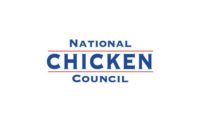The National Chicken Council released a study that presents the results of a 2015 broiler industry survey designed to capture key live chicken production statistics. In addition, the study summarizes several key trends in broiler production efficiency, returns and loan quality data.
"Viewed in totality, live chicken production is a viable, mutually beneficial and attractive farming enterprise for the vast majority of farm families who raise chickens in partnership with the companies they work with," noted agriculture economist and the study's author, Dr. Thomas Elam, president of FarmEcon LLC.
The study represents data from companies responsible for 92 percent of chicken production in the United States. A summary of the findings include:
- More than 95 percent of farmers who did not retire stayed with the same company in 2014. Of the ones that left their current contract, more than 250 farmers moved to a different company to continue raising chickens.
- Chicken farmers generally have higher incomes compared to all farms and all U.S. households, and have an age structure that is similar to all farm operators. A 2011 USDA farm financial survey shows that broiler producers generally have significantly higher incomes than all other farming enterprises and the average U.S. household.
- More than half the farmers have been with their current company for 10 years or more. Almost three-quarters have been with the same company for 5 years or more.
- Responding companies reported significant waiting lists for those who would like to enter live chicken production or expand existing operations. Companies reported that they have 1,858 applications from potential live chicken producers who would like to get into chicken production.
- SBA farm loan data show much lower loan deficiency and charge-off rates for live chicken production than all agricultural loans.
- Inflation-corrected farmer payment rates per square foot of farmer owned housing have increased over time. Farmers who furnish live chicken housing have captured this benefit of better chicken performance.
- The health and well-being of the chickens has greatly benefited from the contract farming structure. In 2014, the average on-farm livability of a flock of U.S. broiler chickens was 95.7 percent. In 1925, it was only 82 percent.
"As a famer and a businesswoman who's been raising chickens for 28 years, the current contract structure has allowed me to not only raise chickens, but raise my sons on my family farm, teach my children and grandchildren how to care for animals, and given me the ability to keep up with technology," noted Jenny Rhodes, a chicken farmer and poultry extension agent at the University of Maryland. "I've always had good relationships with the company I've contracted with, as we both have the same goal – to raise the healthiest chickens possible. Raising chickens in my family is now multi-generational – my son got into the business on his own just this year – a voluntary business arrangement with the company of his choice."
A copy of the study is available by clicking here. For more information about how and why farmers and chicken companies partner to raise chickens, visit Chicken Check In.
Source: National Chicken Council



Report Abusive Comment